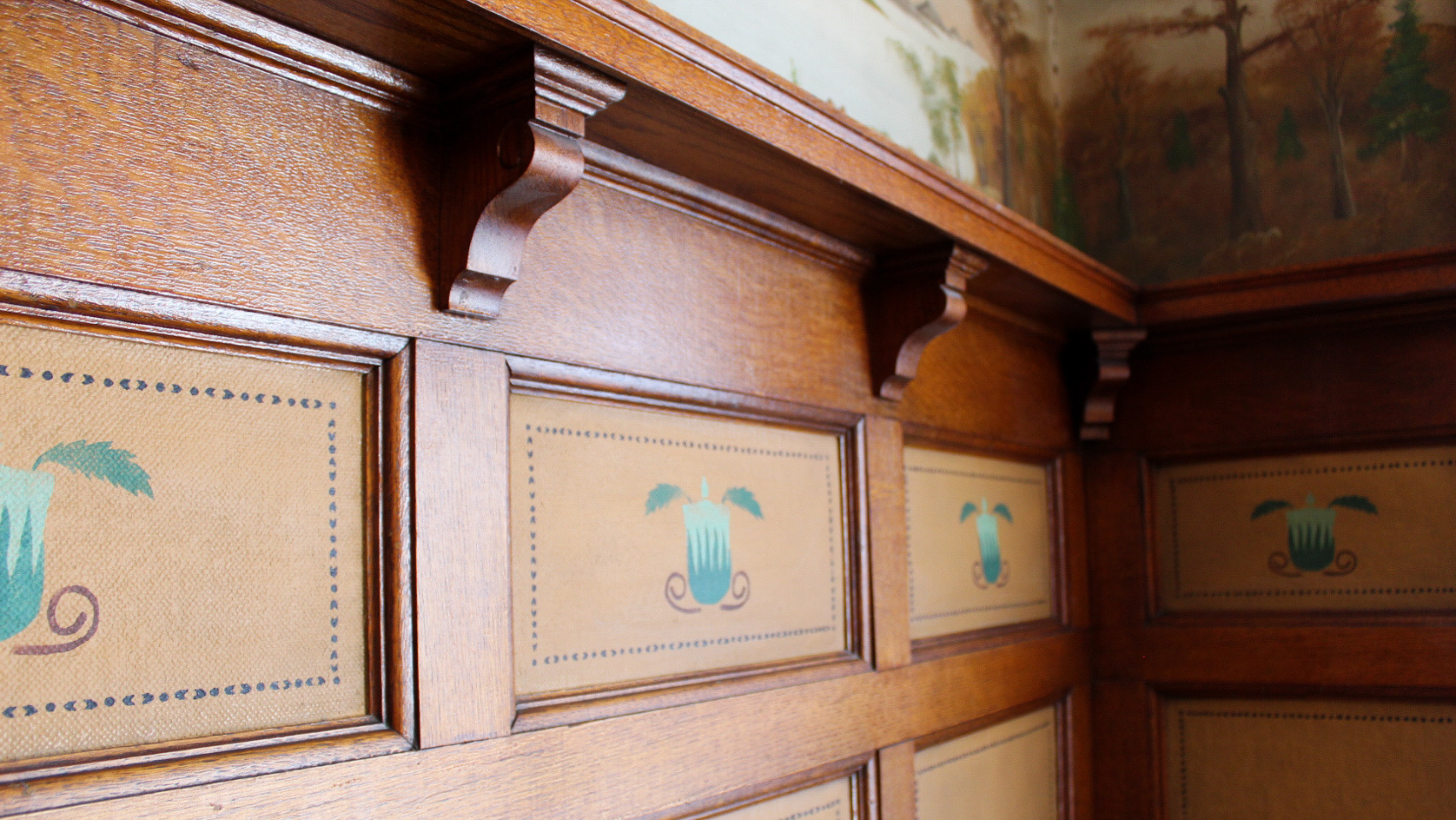With Events & Outreach Coordinator, Bella Bussey
Did you know we have our very own architectural and historic building conservator at The Tower Heritage Center? In his downtime, you can find Executive Director, Steve Stuckey, diving into crawl spaces and checking paint samples under a microscope to study how historic buildings of the present have been structurally adapted and stylistically modified since the past.
One of his most recent projects involved compiling a historic structure report on the extraordinary historic Schwartz Family Home in Hartford, WI. He was asked to do so by Michele Price and the Hartford Historic Preservation Foundation in order to get a sense of the architectural history and structural soundness of the prominent family building before going to town with restorative work.

In essence, a historic structure report (HSR) takes the components of a building’s past with an assessment of its current condition and compiles them as a guide for what to do about its future. It begins with extensive archival research on a building and its ownership- blueprints, newspaper clippings, family histories, Sanborn maps, property documents, etc- to better understand the significance of a home or structure and its representation of a period in time.
Then comes the fun part- getting your hands dirty in the field. The physical fieldwork of a project like this involves tasks like exploring the original foundation in a building’s basement, uncovering original flooring or wall coverings, or probing into the original appliances. According to Steve on this process: “There’s no part that is unimportant to the assessment.”
Every crevice and corner is examined- no texture, color, tile shape, or wood type gets overlooked.

“Depending on budget, I will go floor by floor, room by room, taking samples and cataloging all the info I possibly can, and taking photos of all significant elements.” Steve says he works on a room from the ground up – his way of making sure he catches every detail of the building- and creates floor plans based on the current state of the infrastructure.
Once that physical data is collected, it is time to analyze and mix the tangible history with the intangible.

Steve says more questions usually arise about style and structural choices that were made, and it’s time to dig back into research and fill in the gaps in the building’s story.
Steve says his favorite part of compiling an HSR is by far knitting the threads together to create an anecdote around the building and its elements.
There’s more to the report than just reciting a building’s structural components: “It’s not just about me saying, ‘Here’s your building, here’s how it’s changed and here’s what’s wrong with it and how you can take it back.’ But it’s also weaving them through the narrative of that change.”

The Schwartz Family was preeminent in establishing the economy in their area. Analyzing the details of their 1915 home has been essential to understanding the excitement of the time period, the family’s prominence and wealth, and their contribution to the brewing and hospitality industries in Hartford and Washington County alike.
Most importantly, the HSR also includes a recommended treatment plan to preserve the building’s history so future generations can enjoy and learn from it.
Parting Words
In coming months, we’ll be releasing a series of blog posts and content to illustrate, celebrate, and inform the public about the hard work put into the historic structure report and restoration process of the Schwartz Family Home.
To learn more about the HSR of the Schwartz Family House, the family history, the adaptations made by the Hartford Historic Preservation and their current use of the home, be sure to follow along!
You Make Our Work Possible!
Community support allows us to continue telling Washington County’s stories. We invite you to become a member and consider making an additional gift of support. Contact us about sponsorship opportunities for local businesses as well.
